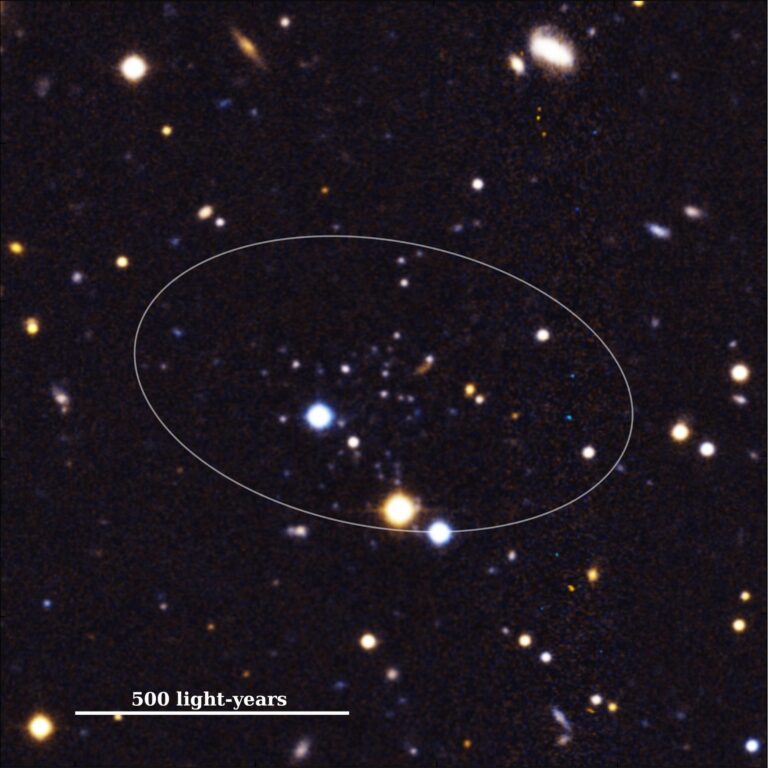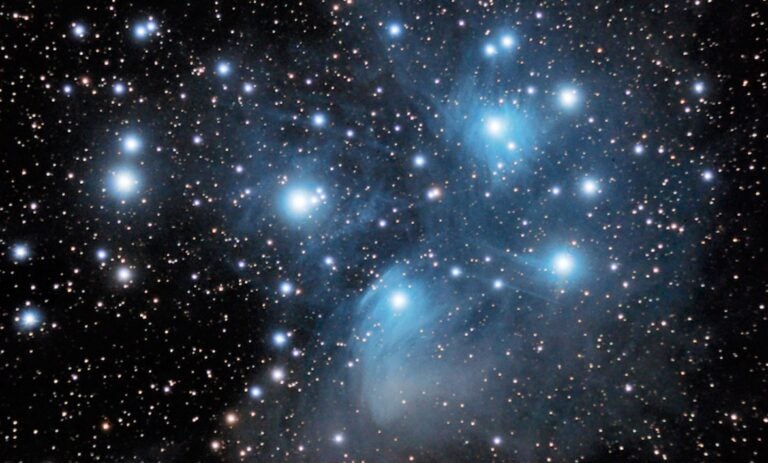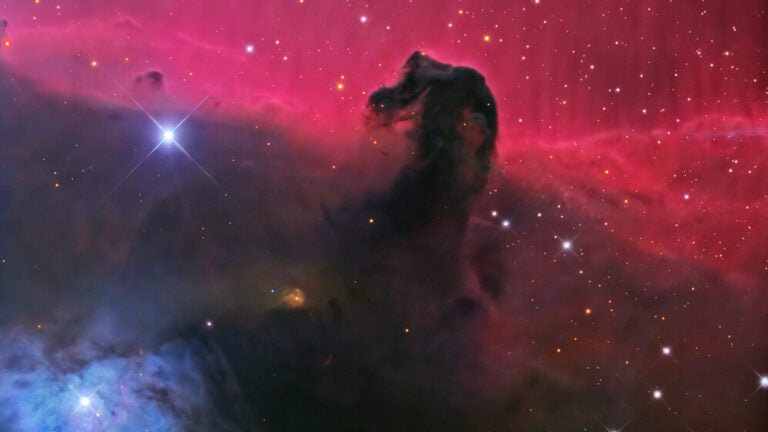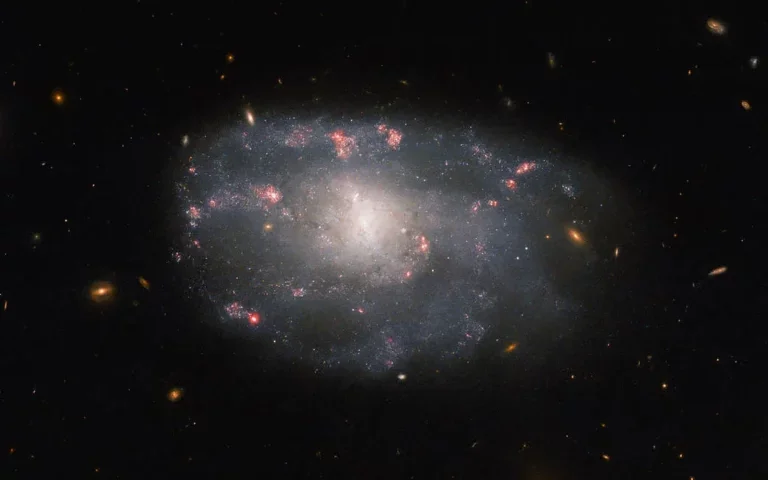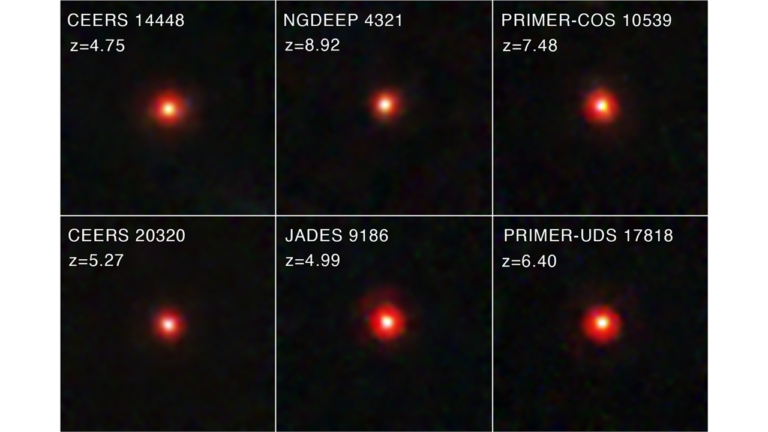Our first object is the Crab Nebula in Taurus. It’s one of the sky’s most famous objects, and a nice small telescope target. Although the word “nebula” is part of this object’s name, astronomers classify M1 as a supernova remnant.
In 1054, a brilliant new star 4 times brighter than Venus appeared near Taurus the Bull’s southern horn. For more than 3 weeks it remained visible during daylight hours, and it took more than a year to fade from view.
William Parsons, Third Earl of Rosse, sketched M1 in 1844 through his 72-inch reflecting telescope. Other astronomers noted the object’s crablike appearance and gave M1 its common name.
This supernova remnant has a high surface brightness, so even a 3-inch telescope (and even some binoculars) will reveal it. The object shines at magnitude 8.0. The Crab Nebula has an oval shape. It measures 6′ by 4′ and orients northwest to southeast.
The easiest way to find the Crab Nebula is to start at the 4th-magnitude bluish star Zeta (ζ) Tauri. From there, move 1° to the northwest.
The Salt and Pepper Cluster
Our next object is the Salt and Pepper Cluster, also known as M37 in Auriga. It shines at magnitude 5.6 and measures 20′ across. You’ll find it 4.9° south-southwest of magnitude 2.7 Theta (θ) Aurigae.
Want to make a model of a celestial object at home? Lay a piece of black paper on a table, and sprinkle a quarter teaspoon of salt on it. Then shine a bright light on the crystals. Voila! M37. Well, not exactly, but you get the idea.
Through any size telescope, M37 displays an even distribution of stars not found in many other clusters. Although it sits squarely within Milky Way, M37’s edge is easy to discern.
Even a 3-inch scope reveals 50 stars. The brightest member — a magnitude 9 orange star — sits near the cluster’s center.
With many open clusters, increasing the size of the telescope worsens the view; as the cluster gets magnified, the stars thin. Also, larger scopes reveal more background stars, making it harder to see the cluster’s outline.
Not with M37. With this wonder, larger scopes only reveal more stars. Through a 10-inch telescope, you’ll count 200 stars, and a 16-inch will reveal 500.
The Eskimo Nebula
Our third winter object is the Eskimo Nebula in Gemini. This planetary nebula also goes by the designations the Clown Face Nebula and NGC 2392. It glows at magnitude 9.2 and measures 15″ across.
Through a small telescope, this object resembles a face surrounded by a fur parka.
To find the Eskimo Nebula, point your telescope 2.4° east-southeast of magnitude 3.5 Delta (δ) Geminorum. The planetary glows at magnitude 9.1, which means you can spot it through just about any scope.
Seeing detail in this object, especially through large scopes, is easy. Use as high a magnification as sky conditions warrant. You’ll have no trouble spotting the planetary’s 10th-magnitude central star.
NGC 2392 has a double-shell appearance. The inner shell appears bright, with a mottled texture. The outer shell looks fainter than the inner one, and a dark ring separates the two. The outer shell also dims with increasing distance from the central star.
Globular cluster M79
Our next object is globular cluster M79 in Lepus the Hare. Lepus may be small, but it’s easy to find. Just look directly south of Orion. The cluster is relatively bright, at magnitude 7.8, and it measures nearly 9′ across.
To spot M79, which, by the way, is the most southerly Messier object in the winter sky, use Alpha (α) and Beta (β) Leporis as pointers. Draw a line from magnitude 2.6 Alpha through magnitude 2.9 Beta and extend that line 3.5°, which is just slightly more than the distance between those two stars.
M79 is among the Milky Way’s oldest globular clusters. Situated 60,000 light-years from the galactic center, this object lies 40,000 light-years from Earth. For all of its magnitude 7.8 brightness, M79 is a difficult object to resolve through small telescopes.
A 10-inch instrument shows that the 8.7′-wide globular has a bright, broadly concentrated core nearly devoid of stars. But crank up the magnification beyond 200x, and you’ll resolve scores of stars as bright as 13th magnitude at the cluster’s edges.
M78
If you’ve never seen M78 in Orion, you’ve missed the sky’s brightest reflection nebula. You’ll find it 2.5° northeast of magnitude 1.7 Alnitak (Zeta [ζ] Orionis).
Through a 4-inch scope at about 120x, you’ll spot an 11th-magnitude star. On either side of this star lie the two densest parts of M78. The nebula measures 8′ by 6′.
If your site is dark, you’ll see another, much fainter region of nebulosity, NGC 2067, only 4.5′ northwest of M78. A dark lane separates the two.
Because so few background stars populate the field of view, astronomers believe M78 sits within a huge, dark cloud that eventually will form stars.
Oh, and don’t use any nebular or deep-sky filter when you view M78. Because its light is mainly reflected starlight (composed of all frequencies) a filter will only dim the view.
Open cluster M35
Our next target is open cluster M35 in Gemini. It’s hard to resist a two-for-one sale, and that’s exactly what this object offers. M35 lies 2.3° northwest of magnitude 3.3 Eta (η) Geminorum.
From a dark site, you’ll spot the magnitude 5.1 cluster easily without optical aid because it’s 28′ across — nearly the diameter of the Full Moon. Point a telescope at M35, however, and not only will it explode into stars, you’ll see a second open cluster, magnitude 8.6 NGC 2158.
Philippe Loys de Chéseaux discovered this cluster in late 1745 or early 1746. English astronomer John Bevis also found it before 1750, the year he featured it in his star atlas, Uranographia Britannica. Messier, who added it to his catalog August 30, 1764, credited Bevis for the discovery.
M35 contains two dozen stars brighter than 9th magnitude, most of which reside near the cluster’s center. In this region, look for a string of stars some 10′ long shaped like a saxophone. The stars align in many other patterns; some of the arcs extend nearly 1. Fainter members push the total number of visible stars past 200.
If you use a low-power eyepiece to engulf M35, NGC 2158 will look like a small, fuzzy ball. This cluster rewards high magnification. Unfortunately, you won’t resolve many of its stars through a 4-inch telescope.
Beta Monocerotis
A small telescope will reveal the seventh object on our list, a beautiful triple-star system called Beta (β) Monocerotis.
Sixty percent of the stars in the sky are double or multiple systems. But few are as beautiful as Beta Monocerotis. This is a star you won’t tire of observing.
Beta is a close triple star whose magnitudes are 4.7, 5.2, and 6.1. Astronomers refer to them as the A, B, and C components, respectively. The separation between A and B is 7″ between B and C, 3″ and between A and C, 10. All three stars appear white.
Spiral galaxy NGC 2403
For our next object, we head to the obscure constellation Camelopardalis to find spiral galaxy NGC 2403. Although the constellation is faint, the galaxy is magnificent.
NGC 2403 is one of the sky’s brightest galaxies, shining with a magnitude of 8.5. It’s large, however, so that brightness spreads over an area defined by the galaxy’s 25.5′ by 13′ dimensions. Its size, by the way, makes NGC 2403’s area 47 percent as large as that of the Full Moon.
Small telescopes show this object as an indistinct haze roughly twice as long as wide, with a bright central region. You’ll need a 12-inch scope to see the galaxy’s spiral arms, and an even larger instrument to trace them all the way back to the nucleus.
Through a small scope at a dark site, look for stellar associations in NGC 2403’s spiral arms. Associations are a type of star cluster resembling open clusters but larger and holding only up to about 100 stars. The presence of these clusters indicates star formation is ongoing within this galaxy.
Plan to spend a lot of time observing NGC 2403. It’s one of the sky’s most spectacular wonders. You’ll find it 7.7 northwest of magnitude 3.4 Muscida (Omicron [ο] Ursae Majoris).
Tau Canis Majoris Cluster
Our next object is the Tau Canis Majoris Cluster in Canis Major. This treat, also known as NGC 2362, is the sky’s 9th-brightest open cluster. Named for its brightest star, the cluster contains magnitude 4.4 Tau (τ) CMa and lots of fainter stars. In fact, no other cluster star shines within 3 magnitudes of Tau.
Tau is one of the most luminous supergiants known. Its absolute magnitude (the brightness it would have if its distance were 32.6 light-years) is -7. That makes it roughly 50,000 times brighter than the Sun.
One of Tau CMa’s common names, the Mexican Jumping Star, probably arose when Northern Hemisphere amateur astronomers observed it twinkling wildly. Because the star sits so low in the sky (from 40 north latitude it’s only 25° high at maximum), its light passes through a lot of atmosphere before it reaches northern telescopes.
To locate NGC 2362, find magnitude 1.8 Wezen (Delta [δ] Canis Majoris), and move 2.7° to the east-northeast. You’ll spot the cluster easily with your naked eyes. Use binoculars, and you’ll see that many stars pack this 8′-wide area of the winter Milky Way.
Through a small telescope, Tau dominates the view, partially obscuring many of the 10th-magnitude stars surrounding it. To get an accurate count of the stars in NGC 2362, place Tau just outside the field of view, first to the north, then to each of the other three cardinal directions. Then, simply count the suddenly visible fainter stars and add the four numbers together.
The Orion Nebula
We’ve come to our tenth and final target, and I’ve really saved the best for last. The Orion Nebula, also known as M42, is an object everyone should see at least once.
The sky contains thousands of gorgeous celestial wonders. If we ranked them according to popularity, however, the Orion Nebula easily would lay claim to the top spot.
Before the telescope’s invention, celestial mapmakers cataloged this region as a star. A French observer named Peiresc first spotted the nebula in 1610. Johannes Bayer, in his 1603 work, Uranometria, assigned it the Greek letter Theta (θ).
Easily seen from a dark site, sharp-eyed observers can detect M42’s cloudy patch even under moderate light pollution. Its total light output is equal to a star of magnitude 4.
Just about any telescope will show the full extent of this object, which covers an area 65′ by 60′. That’s 6 times the size of the Full Moon.
Although you don’t need a nebula filter, using one at a dark location accentuates the contrast between the light and dark regions.
For an extra treat, you’ll need look only 0.1 north-northeast of the Orion Nebula’s center to spot M43. Observers often call this detached region of M42 De Mairan’s Nebula in honor of its discoverer, French mathematician Jean-Jacques D’Ortous de Mairan. Note M43’s sharp eastern edge, which is due to a dark nebula overlapping that area.
Expand your observing at Astronomy.com
StarDome
Check out Astronomy.com’s interactive StarDome to see an accurate map of your sky. This tool will help you locate this week’s targets.
The Sky this Week
Get a daily digest of celestial events coming soon to a sky near you.
Observing Basics videos
Spend some time in our in-house observing expert’s “little corner of the universe.”





